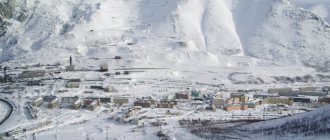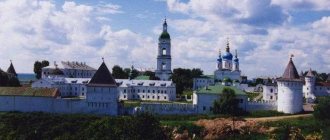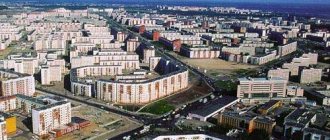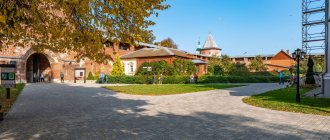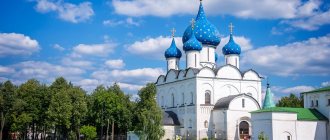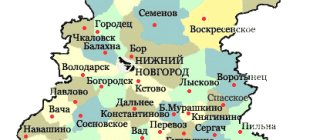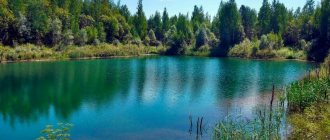Tobolsk – one of the oldest cities in the territory Ural And Siberia. Tobolsk famous for its amazing architectural and historical monuments, the main one of which is Tobolsk Kremlin. Thanks to the abundance of unique attractions, Tobolsk - one of the major tourist centers Ural And Siberia.
Photo source: “Kultura.rf”
Currently, the population of Tobolsk is about 100 thousand people. The city-forming enterprise of Tobolsk is the Tobolsk Petrochemical Plant . also being seriously developed in Tobolsk . The growth of tourists both from Russia and from abroad is growing every year.
Tobolsk State Historical and Architectural Museum-Reserve
Address: Tyumen region, Tobolsk, Red Square 1, building 4 Phones: 8 (3456) 22-34-55 Email: Website: www.tiamz.ru Opening hours: Tuesday-Sunday from 10:00 to 18: 00. Day off is Monday.
City `s history
Tobolsk was founded in the summer of 1587 near the confluence of the Tobol and the Irtysh . The first Tobolsk fort was built from dismantled Cossack plows. It became the second Russian city in Siberia Tyumen was founded a year earlier ).
Not far from the founded Tobolsk (17 kilometers) was the capital of the Siberian Khanate - Isker . It was in these places that the decisive battle between Ermak’s and the Tatar army took place.
Three years after its founding - in 1590 - Tobolsk actually turned into the center of Russian colonization of Siberia . It was called nothing less than the capital of Siberia .
Photo by: Kurilchuk Victor
At the same time, almost from the moment of its foundation, Tobolsk turns into an “exiled” city. All sorts of celebrities have served exile here. And it all started... with a bell. In 1591, the bell in Uglich announced the death of Tsarevich Dmitry . The people of Uglich took the news so close to heart that they quickly dealt with what they considered to be the murderers of the heir to the throne. Tsar Boris Godunov severely punished both the participants in the lynching and the bell, the ringing of which preceded the massacre. The bell was thrown from the Spasskaya Bell Tower , its tongue was torn out and it was publicly “punished” with 12 lashes. Together with the Uglichites, he was sent into Siberian exile. For a whole year, the Uglich convicts walked to Tobolsk and pulled the “punished” bell behind them. The long-suffering bell was first locked in the official hut, and then they had mercy and hung it on the bell tower. Only in 1892 was the bell returned to Uglich . Its exact copy can be seen in one of the halls of the Tobolsk Historical and Architectural Museum-Reserve .
Photo by: fursowa.irina2012
Abalak
In the village of Abalak, 30 kilometers from Tobolsk, there are two interesting attractions: the Holy Znamensky Abalak Monastery and the Abalak tourist complex.
The monastery complex includes: the Znamensky Cathedral, a pillar-shaped bell tower with the Church of St. Mary of Egypt, the elegant St. Nicholas Church, the chapel in honor of the Confessors and New Martyrs of Russia. The Znamensky Abalaksky Monastery is a spiritual shrine of the entire Siberian region, housing the miraculous icon of the Mother of God “The Sign”. The architectural alliance of the monastery took shape in the 18th century. The main buildings of the monastery were built in the Baroque style.
Within walking distance from the monastery, there is another attraction - the Abalak tourist complex, a reconstruction of a Siberian fort during the conquest of Siberia by the Cossacks of Ataman Ermak Timofeevich.
What is Tobolsk famous for?
Tobolsk is the birthplace of many famous people. Semyon Remezov , chemist D.I. were born here. Mendeleev , artist V.G. Perov , composer A.A. Alyabyev , mathematician Yu.S. Osipov , inventor of television B.P. Grabovsky , actor A.G. Abdulov , architect of the Ostankino TV tower and the Motherland monument N.V. Nikitin and others.
Archpriest Avvakum , Decembrists I.A. served their exile in Tobolsk Annenkov , V.K. Kuchelbecker , A.N. Muravyov , M.A. Fonvizin , as well as writer A.N. Radishchev , statesman M.M. Speransky , the first Russian portrait painter I.N. Nikitin . From August 13, 1917 to April 13, 1918, Nicholas II lived in exile Tobolsk with his family. P.P. also lived in Tobolsk. Ershov is the author of The Little Humpbacked Horse .
Photo by: Kurilchuk Victor
In Soviet times, the film “The Golden Woman” was filmed Tobolsk , and not so long ago - the film “War” by Alexei Balabanov .
Provincial Museum
The first local history museum in Siberia was opened in 1870 under the governor’s office. The museum moved to a separate building, built with money from residents, in 1889. Educational and scientific work was carried out in the museum. Exhibitions dedicated to ethnography, natural history, archeology, and industry were held. Now almost all exhibitions of the 19th century are available to visitors, and you can also see unique products from craftsmen.
Sights of Tobolsk
Tobolsk Kremlin
The Tobolsk Kremlin is the only stone Kremlin in Siberia . It is often called the pearl of Siberia . It is located on the upper part of the Trinity Cape .
Photo by: Kurilchuk Victor
Before the construction of the stone Kremlin at the beginning of the 18th century, its wooden counterparts stood on this site. The first wooden fortress was built soon after its founding - in 1594. Since in those days all buildings were wooden, severe fires occurred Tobolsk The wooden Kremlin also burned down several times, but was soon rebuilt. In total, the Tobolsk wooden Kremlin was rebuilt no less, but six times!
Finally, at the beginning of the 18th century, under the leadership of Semyon Remezov, a magnificent stone Kremlin was built. Gradually, the Kremlin was replenished with more and more new buildings.
Photo by: s42
Currently, the ensemble of the Tobolsk Kremlin includes the Sophia-Uspensky Cathedral with the sacristy, the bell tower , the Bishop's House , the tower and walls, the Rentereya , the building complex of the former governor's palace, the guest courtyard, the prison castle and the foothill walls of the Pryamsky Vzvoz .
The Tobolsk Kremlin and all its objects are historical and cultural monuments of federal significance.
Governor's House - Museum of the Family of Emperor Nicholas II
On April 29, 2021, one of the main discoveries in the cultural life of the region took place in Tobolsk the Museum of the Family of Emperor Nicholas II opened its doors to residents and guests of the city . The new museum display object is located in the memorial building of the Governor's House and is historically associated with the exile of the Imperial Family of Nicholas II from August 1917 to April 1918.
The museum is unique in many ways; it allows you to take a fresh look at seemingly long-known facts, to reveal new boundaries of private and public activities of the family of Emperor Nicholas II and the people loyal to them.
Bishop's House
The Tobolsk diocese is the oldest in Siberia , was founded in 1620. For centuries, Siberian bishops and metropolitans carried out missionary, educational, and educational activities among the local population. The residence of the highest clergy of Siberia - “Bishops' House” , was built in 1775. Located on the Sofia side of the Tobolsk Kremlin , for more than two centuries the building was a spiritual center.
Today, the memorial monument, with which numerous names of Siberian righteous people are associated, has been returned to its historical purpose. Today, the office of the current Metropolitan of Tobolsk and Tyumen Dimitry and the diocesan office are located in the bishop's house. In the throne room, meetings are held with the clergy, laity, students of Orthodox gymnasiums, and in the archondarium - with government officials and guests.
Sophia-Assumption Cathedral
Sophia-Assumption Cathedral is the oldest stone structure in Siberia ! It was built back in 1686. However, this date could have been 1684, if that fateful summer the almost completed cathedral had not collapsed - the supporting pillars could not stand it.
Photo by: s42
The cathedral was built according to the type of cross-domed temples. The prototype of the St. Sophia Cathedral was the Ascension Cathedral of the Moscow Kremlin . During Soviet times, the cathedral was closed. At first, exiles and dispossessed people were kept there, then they were used as a grain warehouse.
Cathedral bell tower
Built in the classicist style, the cathedral bell tower, 75 meters high, was erected in the 1790s.
Photo by: s42
Sofia (Pryamskoy) transport
Sofia or Pryamskoy vozz (there were two names) divides the Trinity Cape into two parts. It consists of about 200 steps of a wooden staircase along the hillside and a cobblestone road between high retaining walls. For a long time, along this ravine they climbed the mountain to Trinity Cape . The length of the retaining walls is 180 meters, their height is up to 14.6 meters, and the thickness of the masonry at the base is about 3 meters. Retaining walls were built at the end of the 18th century to prevent landslides. They say that the Pryamsky transport has no analogues in Russia !
Photo source: “Kultura.rf”
Renterea (Swedish Chamber)
Renterea is the repository of the state treasury. Renterea was built in the 18th century by captured Swedes. It was built in such a way that it was practically inaccessible to attacks. Here, behind thick stone walls, the city treasury and yasak - furs . However, from the end of the 18th century until the 1990s, the Tobolsk archive .
Photo by: Kurilchuk Victor
Viceroy's Palace
Located on the former voivodeship part of the Tobolsk Kremlin . The Viceroy's Palace was built in 1780-82 on the site of the Order Chamber (built by Semyon Remezov at the beginning of the 18th century). The three-story building of the Viceroy's Palace became the largest administrative building in the city.
Photo by: s42
However, just a few years after construction - in 1788 - a fire broke out, leaving only the walls of the luxurious palace. The ruins of the Palace stood in this form until 1831, when it was finally restored, but in a slightly modified form.
Now in the Palace of the Viceroy there is a wonderful museum of the history of Tobolsk .
Gostiny Dvor
The Gostiny Dvor of Tobolsk was built in 1703-1708 according to the design of Semyon Remezov . It is a two-story building. On the ground floor there were trading shops, in the basements there were warehouses, and on the second floor there were living rooms for merchants. In appearance, the Gostiny Dvor resembles Bukhara caravanserais, combining elements of ancient Russian and oriental architecture. Gostiny Dvor clearly demonstrates the former commercial importance of Tobolsk .
Photo by: s42
Prison Castle
The prison castle was built in 1838 and served as a transit prison. Many thousands of people passed through the Tobolsk convict prison F. Dostoevsky , N. Chernyshevsky , M. Petrashevsky , V. Korolenko , A. Solzhenitsyn visited its walls .
Photo by: s42
The prison has survived to this day and now functions as a museum. around the prison castle , telling about the events that took place here from 1855 to 1989.
Provincial Museum
The provincial museum was opened in 2002 in a beautiful old mansion, built according to the design of the architect P. Aplecheev .
Photo by: s42
The first collections, the first employees, the first displays and exhibitions - it all began in a memorial building, which has retained its original appearance and architectural identity. The only museum in Western Siberia , which was under the personal patronage of Emperor Nicholas II and was the scientific and cultural center of Siberia .
Today, the museum's exhibition tells the story of the formation of the museum business in Tobolsk , and also presents its first collections: paleontological, archaeological, ethnographic.
Kamelok
Since January 7, 2021, a real family museum center . It is here that events are held to improve the culture of relationships in the family, children are told about folk life, toys and applied arts, and folk calendar holidays.
By visiting a family house , you will get acquainted with the traditional interior of a peasant house, clothes, shoes and hats of Russian peasants, learn how to create folk amulets dolls and paint a wooden flat toy.
Science Library
The scientific library of the Tobolsk Museum-Reserve , after a three-year break, reopened to visitors on April 8, 2011. The library is located in the building of the restored Main (Hospital) building of the Tobolsk Prison Castle , an architectural and historical monument of the mid-19th century.
The main pride of the library is its unique collection, which includes over 54 thousand publications, 35 thousand of which are classified as rare and unique.
Visitors here are introduced to the history of the library of the Tobolsk Provincial Museum and its first figures. The interior is recreated from photographs, used during presentations, exhibitions and viewings, and is available for interactive classes.
Provincial Judicial Administration
The exhibition “Unified Spirit of Victory” is located in the historical building of the Provincial Judicial Administration . Visitors will learn about the exploits of Siberians on the fronts of the Great Patriotic War, and about the selfless work of those who brought Victory Day closer to the rear.
In addition to a tour of the exhibition, the project’s communication platform is used to conduct patriotic lessons for schoolchildren and students, and to watch historical documentaries and feature films. For a complete immersion in history, visitors can try on a soldier's uniform and take memorable photos in a real wartime field tent.
Monument to Semyon Remezov
The monument to Semyon Remezov was erected in 1993 in the center of Sophia Square . Semyon Ulyanovich Remezov was an outstanding and versatile person. He was not only a talented architect, according to whose designs the Tobolsk Kremlin and many buildings in Tobolsk , but also a famous cartographer and chronicler.
Photo by: s42
Monument to Ermak
Back in 1839, a monument to the conqueror of Siberia, Ermak, on Cape Chukmansky . The simple monument is a pointed marble obelisk. It is clearly visible from the observation deck. Also located here is Ermak Park .
Photo by: s42
Polish church
A Roman Catholic (Polish) church was built in Tobolsk in 1900-1909 with money from parishioners. Where do the Poles come from in these Siberian places? The fact is that participants in the Polish Uprising Tobolsk . The number of exiles is indicated by the fact that before the revolution the church had 5 thousand parishioners. This landmark of Tobolsk is located at the intersection of Alyabyev and R. Luxemburg streets under the mountain on which the Kremlin .
Photo by: s42
Zavalnoe cemetery
At the ancient Zavalny cemetery in the city of Tobolsk , many interesting burials have been preserved. P.P. is buried here. Ershov , poet D. Davydov , wife of the writer A. Radishchev - Elizaveta Rubanovskaya , Decembrists V. Kuchelbecker , A. Muravyov , F. Wolf , F. Bashmakov , relatives of the chemist D.I. Mendeleev and others.
Photo by: E-sadovskay
House of Masters
In the Museum of Siberian Crafts and Crafts - the House of Masters , unique exhibits will tell visitors about the history of traditional men's (blacksmithing and leather-shoemaking, pottery, artistic carving and woodworking, cooperage, beekeeping and artistic painting) and women's (knitting and tailoring, weaving and weaving on bobbins, spinning and carpet weaving) crafts of the inhabitants of Siberia.
In the museum’s workshops, you can make a memorable souvenir with your own hands by participating in interactive classes and master classes.
Lower city
Due to its unique topography, the city of Tobolsk is divided into two parts - upper and lower. From the top of the city there is a beautiful view of the so-called lower city. Looking at the view from the hill, one cannot help but marvel at the exceptional integrity of the city and its layout.
Photo by: Kurilchuk Victor
From the outskirts to the center
My phone was not calibrated, and what the heck. North is not up. But our journey began with the “Pearl of Siberia” monument. We almost got off the bus right there.
“Tobolsk is the pearl of Siberia.” It seems like you can't argue with that. Like, “Kyiv is the mother of Russian cities.” Slightly led on the basis of gender-based definitions. But that's not the point. And “Happy Great Victory!” Don't be picky either. It’s only August outside))) It’s May 9th all over the city.
Zavalnoe cemetery
We weren't going to the cemetery at all. But the question-statement of the conductor: “Would you like to see the graves of the Decembrists?” made us look there. We found the grave of Ershov (the author of The Little Humpbacked Horse), the grave of Mendeleev (not Dmitry Ivanovich), and, of course, the graves of the Decembrists. I was in awe of the inscription on the oil worker’s monument.
And I surprised with its name the Temple of the Seven Youths of Ephesus, located on the territory. And the name of the cemetery - Zavalnoye - at first seemed frivolous. Haven't read the history of the name yet. It was located behind the city shaft, that’s all. That's why Zavalnoe.
Decembrists Square
Decembrist Square, founded in memory of officers who openly opposed the ruling authorities. In our photos he is in the morning foggy haze. Many Decembrists marched through Tobolsk, seven of them remained here forever.
Monument to the Wives of the Decembrists. The figure of a woman standing in the rotunda certainly resembles the plot of “The Star of Captivating Happiness.”
Monuments and museums on Remezov Street
A little further down the street there was a monument to Robinson Crusoe. Near some educational institution. Maybe he is there as a symbol of “never give up.” Graffiti on a transformer booth. One can vaguely discern “The Little Humpbacked Horse” on it. Only because it is there. Tobolsk Pravda Square and a monument to the journalist. By the way, a real one who died in Chechnya. Not some kind of collective image.
We saw the wall of the same city rampart behind which the cemetery was located. In the 17th century, it was one of the “regular” fortresses that were then built throughout Russia. Now it is a monument to Siberian fortification.
We passed several more museums along the way, but they were closed. On weekends, many work only by appointment.
I was amused by the local government building. Shabby. Well done, I think. Everything to people, to yourself - last of all)))
So, slowly, we reached the Kremlin. We decided that we should have breakfast and get back to sightseeing. At the Vremena Goda hotel where we stayed, the hostess was kind enough to give us “tomorrow’s breakfast.” I mean, breakfast was included, but checkout the next morning was early. She agreed to make the change))))
How to get there?
By car to Tyumen, then to Tobolsk along the P-404 highway.
By bus to Tyumen, then to Tobolsk. In addition, you can get from Yekaterinburg to Tobolsk without transfers by buses going to Khanty-Mansiysk and Surgut.
By train in the direction of Surgut, Nizhnevartovsk, Purpe, Korotchaevo, Novy Urengoy to Tobolsk station.
By plane to Tyumen, from there by bus, train or train. You can also get to Tobolsk by water - river transport.
Coordinates for GPS navigator
58.19885349014728, 68.2513496242754
Tobolsk on the map
House of Kornilov
The estate of the merchant of the first guild, steamship owner and philanthropist Ivan Nikolaevich Kornilov was built in the 1860s. Stylistically, the house was an example of late classicism. When the house came into the possession of his son, Ivan Ivanovich reconstructed it in 1890. The building took on the form of a Baroque-Renaissance style.
Since 1917, the district court was located in the Kornilov house, after which the headquarters of non-commissioned officer V.K. Blucher. In Soviet times there was a bank there. Since 1993 – Center of Russian Culture. Since the 2000s, it has been the residence of Tobolsk magistrates. Nowadays the only museum “History of the judicial system of Western Siberia”.
Monument to Fyodor Mikhailovich Dostoevsky
Dostoevsky was convicted in 1849 for participation in Petrashevsky's circle and exiled to hard labor in Siberia. From January 9 to January 20, 1850 he was in Tobolsk prison. Here, from Captain Smolkov, Fyodor Mikhailovich received a book given to him by his wife. It was the Gospel because other literature was banned. A fan of communist ideology became a believing Christian.
What to bring
In addition to traditional magnets, mugs, plates and T-shirts with prints, which can be found in any provincial city, you can bring carved bone products from Tobolsk. Here is the only bone-carving factory in the country, where craftsmen turn mammoth tusks, shark teeth, elk and deer antlers, and even just cattle bones into openwork jewelry, figurines, and keychains. The cost of such products depends on the material and size: from 500-700 RUB for a small brooch or keychain made from the tarsus (bone) of a cow or elk horn to 150,000 RUB for a picture carved on a solid mammoth tusk. The factory and its store are located in the Upper Town, opening hours: from 8:00 to 17:00, lunch from 12:00 to 13:00.
As for edible souvenirs, fish is brought from here: smoked and salted muksun, nelma, sturgeon will please any gourmet. Pine nuts, cones and dried mushrooms will also be a good gift for residents of the western part of the country.
Entertainment
What to do for tourists who want to take a break from sightseeing? Entertainment in Tobolsk can be different. Active travelers can visit the Alemasova ski resort, which can be reached from the city center in ten minutes. You can rent snowboards and alpine skis at the resort.
Tasting local cuisine is included in the list of entertainment available to tourists. For example, visitors to the Ladeiny restaurant, which is located not far from the Kremlin, will be able to feel the flavor of the Siberian city. A visit to a wooden house, stylized as a Russian tower, will in itself leave a vivid impression. At the restaurant you can taste traditional Siberian dishes.
Weather
- Today
- Tomorrow
- December 16
, ThursdayCloudy, light snow
-5 °C during the day -14 °C at night
- December 17
, Friday
Cloudy, light snow
-3 °C during the day -5 °C at night
- December 18
, Saturday
Mainly cloudy
-6 °C during the day -6 °C at night
- Weather for 2 weeks
Tobolsk is a Siberian city; if you come here in winter, be prepared for severe frosts. On the other hand, the white stone Kremlin looks best under the winter sun. In summer it is not as hot here as in the central part of Russia, and it is during this period that most tourists visit the city. You should not come to Tobolsk in late autumn, when the slush gives way to cold weather, the same applies to early spring. It is better to plan your trip for early September or mid-May.
Alexander Chapel
Historically associated with the Romanov dynasty and built in honor of Emperor Alexander II in memory of his visit to Tobolsk, when he was still a prince. The chapel was installed approximately on the site of his stay in the city in 1837 - its construction was first thought about after the death of the Tsar due to an assassination attempt, in order to hold memorial services for him. But the project of the Tobolsk architects contained many shortcomings, so A. Parland, the author of the St. Petersburg Church of the Savior on Spilled Blood, took on it.
Alexander Chapel
The construction of the chapel was completed in 1887, and it was consecrated. It is made in the form of a tower with a square base; on its sharp roof there is a dome with a gilded cross.
- Address: between Mira and Khokhryakova streets.
Road underground
Opposite the Kremlin stands the gloomy bulk of a prison castle, built in the mid-19th century. This is a former convict transit prison - the notorious Tobolsk Central, and in Soviet times - the ST-2 special prison of maximum security, which operated until 1989. With cramped cells, punishment cells (hot, cold, wet, hunchbacked, dark, “glass”), underground passages so that there was no need to transfer prisoners from one building to another along the street, tiny rations (others were entitled to only 300 g of bread and two mugs boiling water per day), shackles, straitjackets, smelly latrines and a so-called “grater” on the inside of the door in the cell so that the inmates would not be tempted to knock.
Not only hardened criminals, murderers and robbers languished in its dungeons, but also many so-called political ones - those who received prison terms for their convictions and resistance to the authorities. At various times, the poet and translator Mikhail Mikhailov, the writer and publicist Vladimir Korolenko, the philosopher Nikolai Chernyshevsky, the revolutionary Fanny Kaplan, and the writer Alexander Solzhenitsyn served time here. During the Great Terror of the 1930s, several thousand people were shot in prison, and how many died from hunger, disease and daily torture is still not known exactly.
jail
Photo: Getty Images/Alexander Aksakov
Today there is nothing here that reminds us of the terrible “cover”, which for many became the last place in life. In the prison buildings there is a quite nice exhibition of the Museum of Siberian hard labor and exile, dedicated to the one and a half century history of the castle - pre-revolutionary and Soviet. But she is also amazing. It is difficult to say what exactly makes a more depressing impression - the original belongings of the prisoners, the blank pencil cases of the punishment cells, or the heavy smell that still wafts from the gloomy dungeons.
Going uphill: what to do for a Muscovite in Ossetia
Fydzhyn, theater and other joys of Vladikavkaz
Note : In the very center of the prison castle there is a hostel “Uznik” - for those who still want to tickle their nerves a little more, and at the same time spend the night with minimal comfort.
Evening and night
Where to go in Tobolsk in the evening? A visit to the P. P. Ershov Theater will give you a lot of impressions. It traces its history back to 1705. Surprisingly, the idea of creating a theater was actively supported by Metropolitan Philotheus. Plays with secular content began to be staged on stage only in 1744; before that, only church plots were used.
This is not to say that nightlife in Tobolsk is in full swing. However, the city still has interesting places for those who want to relax. Nightclubs “Rasputin” and “Tobol”, cafe-club “Old Town” are establishments whose doors are always open to local residents and tourists.
Water tower
It is considered a unique monument of industrial architecture of the early 20th century, since water supply in Tobolsk was a difficult task. The city consisted of upper and lower suburbs, and water had to be delivered to the mountain by hand.
Water tower
In 1902, a red brick tower was built not far from the Kremlin, which provided water to the mountainous part of Tobolsk. Now it has joined the list of ancient and unusual places in the city, and a cultural center is located inside it.
- Address: st. Red Square, 2 B.
Ermak Garden Park
The garden area is located around the monument to Ermak, erected in 1839 at Cape Chukman. Ermak is an iconic figure in the history of Siberia. According to historians, in 1582, a detachment of free Cossacks under the leadership of Ataman Ermak set out on a campaign along the rivers of Siberia and the Urals, liberating the lands from the oppression of the Tatar invaders along the way.
The garden was developed in 1855. In the garden one could see greenhouses and greenhouses. Until now, the garden park has been modified many times. During the Soviet era, not far from the monument to Ermak, 2 mass graves with memorial plaques appeared: in memory of the Red Army soldiers who died in 1919 and the victims of the revolt of the kulaks and Socialist Revolutionaries of 1921.
The last reconstruction took place in 2021. Ermak Garden Park is one of the most visited attractions in Tobolsk.
Special route
You can’t drop into Tobolsk on the way somewhere; you have to go here specifically. The city is located away from the main transport routes. The nearest airport is in Tyumen, two and a half hundred kilometers away. It's about four hours by car or by train, by bus and even longer. The railway line was laid only in the middle of the last century, and before that the main transport artery was the Irtysh River. Trade barges and passenger ships plied along it.
River
Photo: Alexander Sidorov
Twice on the same river: from Moscow to Kineshma and back
How does a river cruise on the Volga work?
It still retains its significance today. Even in winter. Cars move from one bank to another directly on the ice. The current in the Irtysh is strong, so the ice is not always thick enough to support a multi-ton load. But local residents have found a way out - in the right places they specially create crossings, pumping the river out of the river and pouring it on top of the ice. It’s a lot of work, because the river bed is like a wind tunnel and a very strong wind almost always blows here.
stairway to Heaven
The road leading to the city first winds among picturesque rocks with almost vertical walls, and then at some point rests at the foot of a high hill with a snow-white Kremlin on top. From below, from the side of the ancient settlement, a staircase leads up, called the Sofia Vzvoz, the steps of which are exactly 198. Or 203. However, local residents claim that this is not accurate, because no one has yet managed to walk all of it and not lose count.
Tobolsk
Photo: Alexander Sidorov
Maybe it’s because of its steepness - it’s not for nothing that in winter boys enjoy skating here on the ice skates. Or maybe the reason is the bewitching beauty that suddenly falls on you from all sides: the mighty Irtysh, the free-flowing lower city with the domes of Baroque churches, ancient towers with trumpeting angels on the spiers. Peace and quiet. Low winter sun. And slender strings of stove smoke running somewhere upward into the blue sky.
Place of power
How to spend a week in Altai

